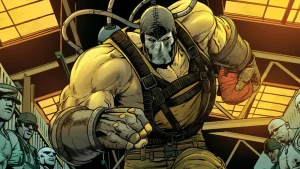Marvel’s most enduring revenge stories work because they target identity instead of anatomy. The medium grows up a little each time it admits that consequences can’t be quipped away, and that “justice” without empathy is just a slower form of payback.
What ultimately sets Marvel’s treatment of revenge apart is its willingness to question the value of vengeance itself. In their best stories, revenge is never presented as cleanly satisfying but as a poisoned chalice that offers closure at the cost of something essential. When Matt Murdock finally defeats Kingpin, the victory feels hollow because of what he’s sacrificed to achieve it. When Thor finally confronts his father’s legacy, he realizes that breaking the cycle matters more than settling scores. This approach gives Marvel’s revenge stories a relevance and resonance that transcends simple power fantasies.
The relationship between Daredevil and Bullseye has always been one of the most toxic and antagonistic in Marvel Comics. From the beginning, Bullseye has been obsessed with proving himself superior to Daredevil. The most infamous chapter in their rivalry occurred in the classic Daredevil #181, when Bullseye murdered Elektra — Matt Murdock’s lover and former assassin — by impaling her on her own sai. This devastating loss shattered Daredevil, who nearly killed Bullseye in response but ultimately chose restraint. Daredevil’s Catholic guilt and his belief in redemption make him the least likely character to embrace revenge, which is precisely what makes his gradual moral corruption so powerful.
The 2012 four-issue, Deadpool Kills the Marvel Universe, limited series by Cullen Bunn and Dalibor Talajić begins with Deadpool being committed to an asylum for treatment/ There, a psychiatrist (who’s actually Psycho-Man in disguise) attempts to brainwash Deadpool into becoming his personal assassin. The plan spectacularly backfires. Instead of merely bending to Psycho-Man’s will, the treatment breaks something fundamental in Deadpool’s already fractured mind.
The voices he normally hears are replaced by a new voice that reveals a terrible “truth”: that all Marvel characters are fictional puppets created for readers’ entertainment, forced to suffer endlessly in narrative loops for all eternity. This revelation triggers Deadpool’s revenge against the entire Marvel Universe and, by extension, the writers and readers who perpetuate their suffering. He methodically begins assassinating Marvel characters, starting with the Fantastic Four and working his way through the Avengers and even the X-Men.
Thanos’s infamous decimation first occurred in the 1991 Infinity Gauntlet storyline by Jim Starlin and George Pérez. Unlike the MCU version, comic Thanos wasn’t motivated by environmental concerns but by his twisted love for Death (the cosmic entity personifying mortality). To prove his devotion to Death, he collected all six Infinity Gems (later called Stones), assembled them in the Gauntlet, and with a simple snap, erased half of all life in the universe. The scale was incomprehensible — trillions of lives across countless worlds instantaneously reduced to dust.
The Sentry’s destruction of Asgard occurred during the climax of Siege (2010) by Brian Michael Bendis and Olivier Coipel. Norman Osborn, then leading the Dark Avengers during his “Dark Reign,” launched an assault on Asgard (which was hovering above Broxton, Oklahoma following Thor’s resurrection of the realm). Osborn manipulated the mentally unstable Sentry into leading the attack. During the battle, the Sentry’s dark half — the Void — took complete control. After killing Ares by literally tearing the God of War in half, the Void/Sentry proceeded to completely demolish Asgard, ripping the golden city from the sky and reducing it to rubble on Earth.
Magneto’s origin as Holocaust survivor Max Eisenhardt/Erik Lehnsherr was established in 1981’s Uncanny X-Men #150. Born to a Jewish family in Germany, young Erik witnessed and experienced the full horror of Nazi persecution — his family was murdered at Auschwitz, and he was experimented on while imprisoned. This trauma fundamentally shaped his worldview and later motivated his militancy regarding mutant rights. Once he discovers his powers, he hunts down Nazi war criminals, serving his own brutal version of justice on those who wronged him and his people.
Old Man Hawkeye by Ethan Sacks and Marco Checchetto serves as a prequel to the acclaimed Old Man Logan storyline. Set in a dystopian future where villains have conquered America, the 12-issue series follows an aging Clint Barton who discovers he’s developing glaucoma that will soon render him completely blind. Hawkeye embarks on a final mission to hunt down the Thunderbolts, the former supervillain team who betrayed their redemptive path by helping kill the Avengers decades earlier. It’s one of Marvel’s cleaner, more coherent revenge sprees of the last decade because it gives Barton a specific, shame-soaked target list and a clock (impending blindness) that forces urgency without turning him into a quip machine.
Doctor Doom’s revenge on Reed Richards isn’t “one” revenge so much as a lifelong sacrament Doom performs to correct what he sees as a single cosmic injustice: that Reed is acknowledged as the superior mind. This revenge has manifested in countless schemes across Marvel history. Doom kidnapped Richards’ wife Sue Storm multiple times, trapped the Fantastic Four in microscopic size, swapped bodies with Richards, manipulated Richards’ son Franklin, and once even claimed Richards’ daughter Valeria as his own when he helped deliver her during a complicated birth. Perhaps most memorably, in 2015’s Secret Wars by Jonathan Hickman, Doom achieved the ultimate revenge by stealing the power of omnipotent beings to remake the universe in his image, with Richards erased from existence and Sue as his wife.
The Green Goblin killing Gwen Stacy is the moment Spider-Man grew up — cruel, personal, and engineered to punish Peter Parker for ever believing heroism could protect a private life. Seeking revenge against Spider-Man for past defeats, Osborn kidnapped Peter Parker’s girlfriend Gwen Stacy and lured Spider-Man to the Brooklyn Bridge. In the confrontation, Goblin knocked Gwen off the bridge. Spider-Man shot a web line to catch her, but when he pulled her up, he discovered she was already dead. The Night Gwen Stacy Died broke the Silver Age social contract and announced that consequences were here to stay. You can draw a straight line from this to the darker tone of 1970s–1980s Marvel and DC.
In Old Man Logan, a villain-ruled future, the Hulk Gang (Banner’s inbred descendants) murders Logan’s wife and kids. What follows isn’t “the hero returns,” it’s the return of the thing Logan tried to bury as he abandons his no‑killing oath. He exterminates the gang methodically, then walks into Bruce Banner’s lair for the source. An elderly, degenerated Banner hulks out and literally devours him. Except Logan’s healing factor makes him the one thing you really don’t want to eat. He regenerates inside and carves his way out, killing his enemy in what might be the most gruesome death ever depicted for a major Marvel character.
Unlike most comic book catastrophes that are neatly resolved, the consequences of Wanda’s actions permanently altered Marvel’s landscape. In Avengers Disassembled, the Avengers faced a series of inexplicable catastrophes: Tony Stark appeared drunk at a UN meeting, She-Hulk went berserk, the Vision crashed a Quinjet into Avengers Mansion before disgorging Ultron robots, and former Avenger Hawkeye sacrificed himself battling the unexpected threats.
The team ultimately discovered that Wanda Maximoff, the Scarlet Witch, was responsible. Her reality-warping powers had spiraled out of control. This crisis continued in House of M, where Wanda, at her breaking point, rewrote reality entirely. When this reality collapsed and the original world was restored, Wanda uttered three words that would change Marvel forever: “No more mutants.” This spell decimated the mutant population from millions to mere hundreds, an event known as “M-Day.”
What do you think? Leave a comment below and join the conversation now in the ComicBook Forum!
The post 10 Most Brutal Acts Of Revenge In Marvel Comics History appeared first on ComicBook.com.




